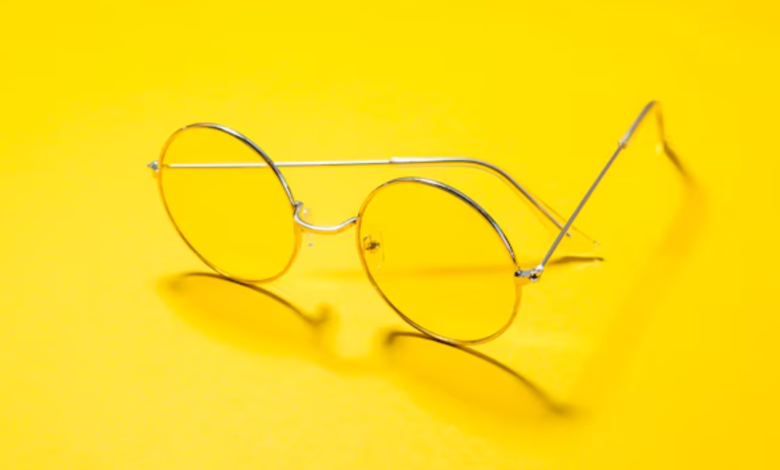Glasses: Everything You Need to Know Before Buying

When it comes to glasses, there’s so much more than just picking a pair of frames that look good on you. Whether you’re looking to improve your vision or make a stylish statement, glasses play an important role in both function and fashion. With countless options in terms of frames, lenses, and features, choosing the right pair can feel like a daunting task.
But don’t worry! This comprehensive guide will walk you through everything you need to know to choose the perfect glasses for your needs — from types of glasses and lenses to face shapes and frame materials. Plus, we’ll share tips on how to keep your glasses in top condition.
What Are Glasses?
Glasses are wearable devices used primarily to correct vision problems, but they can also protect your eyes and serve as a fashion accessory. They consist of lenses, which correct your vision, and frames, which hold the lenses in place. Glasses can help with conditions like nearsightedness (myopia), farsightedness (hyperopia), astigmatism, and presbyopia (age-related vision changes).
In addition to vision correction, glasses today come with various features that protect your eyes from harmful UV rays, blue light from screens, and other environmental hazards. For many, glasses have also become a way to express their personal style.
Different Types of Glasses
There’s no “one-size-fits-all” when it comes to glasses. Your needs will vary depending on the kind of vision problem you have, your lifestyle, and even your fashion preferences. Let’s break down the most common types of glasses:
Prescription Glasses
Prescription glasses are the most common type. These glasses are custom-made based on your eye exam, and they’re designed to correct specific vision issues. Whether you need them for nearsightedness, farsightedness, astigmatism, or another condition, prescription glasses are tailored to fit your unique needs.
Reading Glasses
As we age, many people develop a condition called presbyopia, where the eyes gradually lose the ability to focus on close objects. If you’ve ever struggled to read small text or needed to hold a book or phone further away, you’re likely familiar with this condition. Reading glasses help improve close-up vision and are typically used by people over the age of 40.
Sunglasses
Sunglasses aren’t just about looking cool. They are essential for protecting your eyes from harmful UV rays, which can lead to eye diseases like cataracts. Sunglasses also reduce glare, especially when you’re driving or out in bright sunlight. Some sunglasses even come with prescription lenses, so you can enjoy both vision correction and UV protection.
Safety Glasses
Safety glasses are designed for protecting your eyes in hazardous environments, like construction sites, laboratories, or while engaging in activities like woodworking. They are made of durable materials and often come with side shields to provide extra protection.
Blue Light Glasses
With the increase in screen time from computers, smartphones, and TVs, more people are experiencing eye strain, headaches, and disrupted sleep patterns. Blue light glasses filter out harmful blue light emitted by digital screens, reducing eye strain and helping you sleep better at night.
Choosing the Right Lenses for Your Glasses
When selecting glasses, the lenses you choose are just as important as the frame. Different lens types cater to specific needs. Let’s explore the options:
Single Vision Lenses
Single vision lenses are used for a single purpose — either correcting distance vision (nearsightedness) or close-up vision (farsightedness). These lenses have one prescription throughout, making them the most common and basic lens type.
Bifocal Lenses
Bifocal lenses contain two distinct optical powers. The top portion is for distance vision, and the bottom part helps with near vision, like reading. These lenses are particularly helpful for people with presbyopia, allowing them to see both far and near distances without needing multiple pairs of glasses.
Progressive Lenses
Progressive lenses are a type of multifocal lens that provides a gradual change in optical power, with no visible lines separating the different prescriptions. These lenses allow you to see clearly at all distances — from close-up to far away — without the noticeable lines found in bifocals or trifocals.
Photochromic Lenses
Photochromic lenses, also known as transition lenses, darken in response to sunlight and return to clear indoors. They provide the convenience of having both prescription glasses and sunglasses in one, making them a great choice for people who frequently transition between indoor and outdoor environments.
High Index Lenses
People with stronger prescriptions often find high index lenses helpful. These lenses are thinner and lighter than traditional lenses, reducing the bulk and weight. If you have a strong prescription and dislike heavy glasses, high index lenses may be a good option for you.
How to Choose the Best Glasses for Your Face Shape

The right pair of glasses can enhance your features and complement your style. One key factor in choosing glasses is considering your face shape. Here are some tips to help you pick frames that suit your unique features:
Oval Face Shape
Oval faces are balanced, with soft curves and no prominent angles. Most frame shapes will look good on an oval face. To add definition, opt for square, rectangular, or angular frames that contrast with the soft lines of your face.
Round Face Shape
Round faces have soft curves and a fullness around the cheeks. To balance this shape, choose angular or rectangular frames to elongate your face. Frames with sharp lines will help create a contrast with your soft facial features.
Square Face Shape
Square faces are defined by their angular features and broad jawline. Rounded or oval frames can soften the sharp lines of a square face and add balance. Avoid frames with harsh lines or angles, as they can exaggerate the shape.
Heart-Shaped Face
A heart-shaped face typically features a wider forehead and a narrower chin. To balance this, go for frames that are wider at the bottom, like round or aviator glasses. These frames will draw attention away from the forehead and soften the shape of the chin.
Diamond Face Shape
Diamond-shaped faces are characterized by high cheekbones and a narrow forehead and chin. Oval or cat-eye frames work well for this face shape, as they add balance and bring focus to the eyes.
Materials of Glasses Frames
The material of your glasses frame affects both their durability and comfort. Here are the most common frame materials:
Metal Frames
Metal frames are lightweight, adjustable, and durable. They come in a variety of finishes, including gold, silver, and matte. They offer a sleek, sophisticated look and tend to be more suited for professional or minimalist styles.
Plastic Frames
Plastic frames are often more affordable and come in a wide range of colors and patterns. They are generally more durable than metal frames and are less prone to bending. Plastic frames are a great option for those seeking versatility and style variety.
Titanium Frames
Titanium is a strong, lightweight metal that’s resistant to corrosion. Titanium frames are highly durable and hypoallergenic, making them an excellent choice for sensitive skin. While they can be pricier than other frame materials, their longevity and comfort often make them worth the investment.
Wood Frames
For a unique and eco-friendly option, wooden frames offer a natural, earthy look. They are often handcrafted and are lighter than plastic frames. However, wooden frames require more maintenance and care to avoid warping.
Caring for Your Glasses
Proper care and maintenance are crucial for extending the life of your glasses. Here are some simple tips to keep your eyewear in tip-top shape:
Clean Regularly
Use a microfiber cloth to wipe your lenses clean. Microfiber cloths are gentle and won’t scratch your lenses, unlike regular tissue or paper towels. Avoid using harsh chemicals — instead, clean lenses with a gentle lens cleaner.
Store Properly
When you’re not wearing your glasses, store them in a protective case. This prevents scratches, dust, and damage. Always make sure the lenses are clean before storing your glasses to avoid dirt buildup.
Avoid Extreme Heat
Avoid leaving your glasses in places where they may overheat, such as in a hot car. Excessive heat can warp the frame and damage the lenses, especially if they have a special coating.
Regular Adjustments
As the years go by, your face shape may change, or the fit of your glasses may loosen. Visit your optician regularly to have the frames adjusted for comfort and optimal vision.
Conclusion
Choosing the right pair of glasses goes beyond simply picking a fashionable frame. It involves understanding your unique vision needs, face shape, and lifestyle preferences. With the right combination of lenses, frames, and materials, your glasses can enhance your appearance, comfort, and vision.
Whether you’re buying your first pair or replacing your old ones, use the tips and guidelines above to find the glasses that best suit you. Don’t forget, taking good care of your glasses will ensure they stay in great condition for years to come.
Now, armed with all this information, you can make an informed decision when choosing the perfect pair of glasses that will not only improve your vision but also your style.

